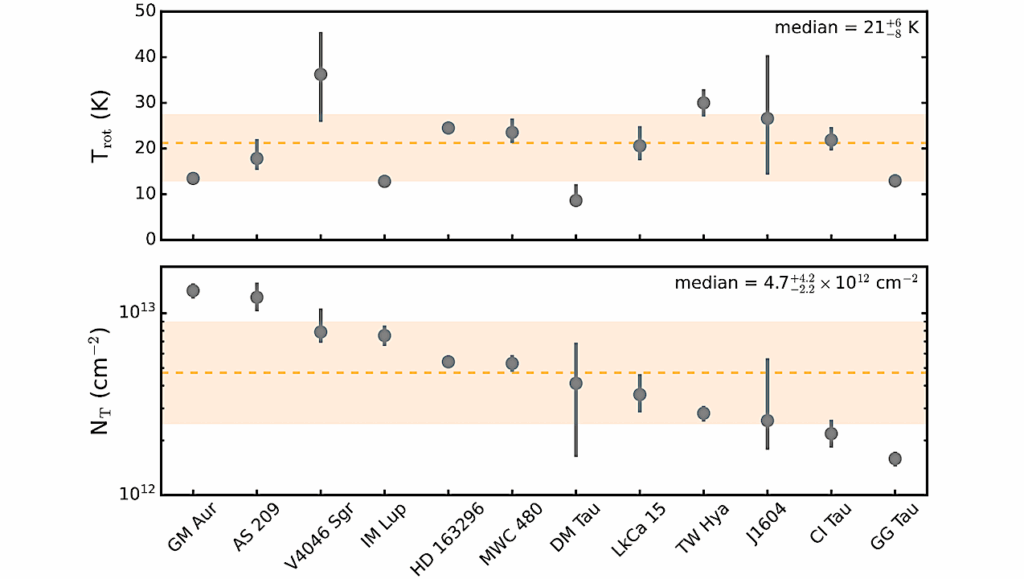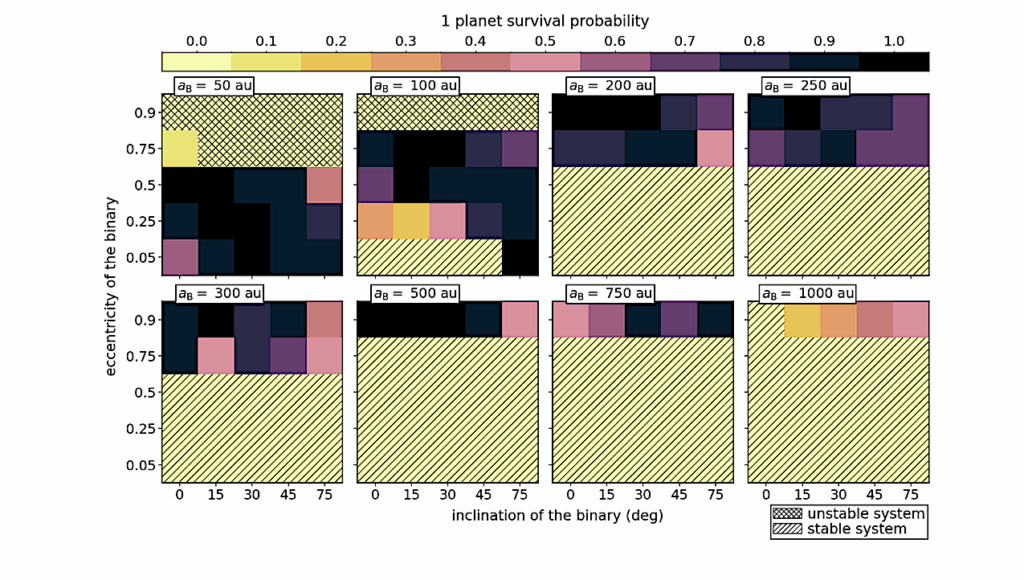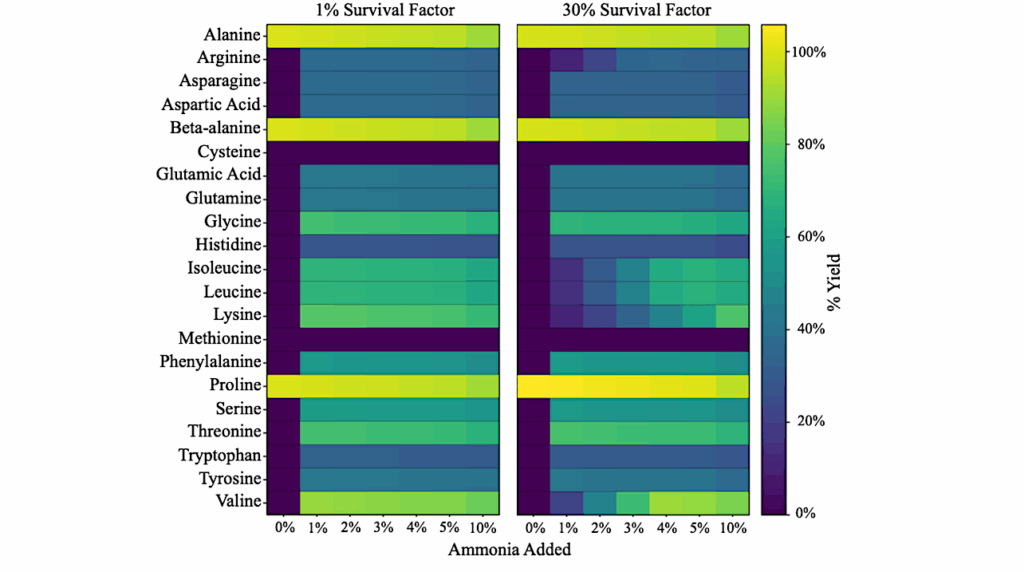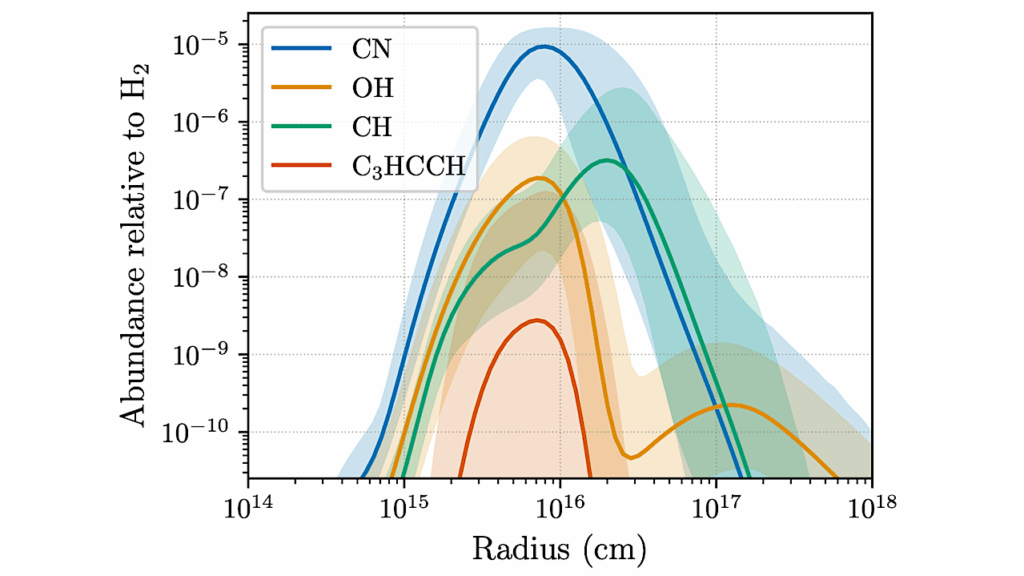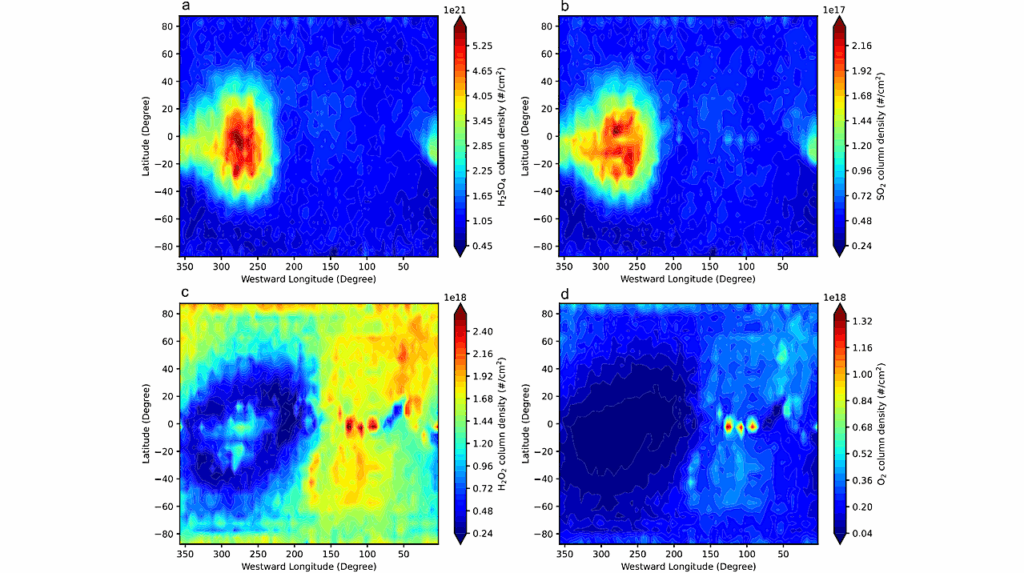Predicting the Detectability of Sulphur-bearing Molecules in the Solid Phase with Simulated Spectra of JWST Instruments
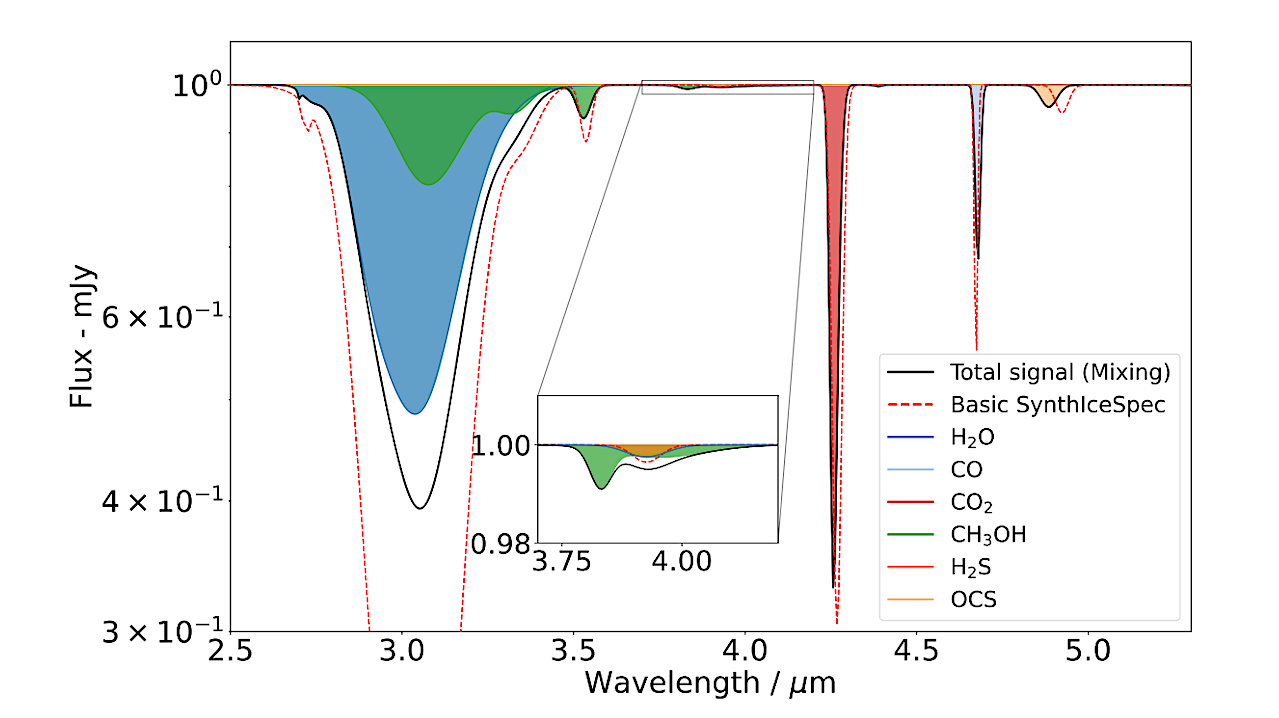
To date, gas phase observations of sulphur in dense interstellar environments have only constrained the molecular carriers of ∼ 1 % of its predicted cosmic abundance. An additional ∼ 5 % is known to be locked up in molecular solids in dense clouds, leaving the main reservoir of depleted sulphur in the solid phase yet to be identified.
Overall, OCS is the only S-bearing molecule unambiguously detected in interstellar ices thus far with infrared telescopes, although an absorption feature of SO2 has been plausibly identified at 7.5 µm. The spectral resolution and sensitivity of the James Webb Space Telescope (JWST) could make a substantial difference in detecting part of this missing sulphur. The wavelength coverage of the JWST includes vibrational absorption features of the S-carriers H2S, OCS, SO2, CS2, SO, CS, and S8 are found.
The aim of this study is to determine whether these molecules may be viable candidates for detection. We carried out new laboratory measurements of the IR absorption spectra of CS2 and S8 to update the IR band strength of the most intense CS2 absorption feature at 6.8 µm, as well as to determine that of S8 at 20.3 µm for the first time. These data, along with values previously reported in the literature for H2S, OCS, and SO2, allow us to evaluate which S-bearing species could be potentially detected with JWST in interstellar ices.
Taking the literature abundances of the major ice species determined by previous IR observations towards starless cores, low-mass young stellar objects (LYSOs) and massive young stellar objects (MYSOs), we generated simulated IR spectra using the characteristics of the instruments on the JWST. Thus, we have been able to establish a case study for three stages of the star formation process. These spectra were simulated using a tool that produces synthetic ice spectra, with the aim of studying the feasibility of detecting S-bearing species with the JWST by artificially adding S-bearing molecules to the simulated spectra.
We conclude that the detection of S-bearing molecules remains challenging due to a variety of parameters; principally, the overlap of absorption features with those of other species and the mixing of molecular species in the ice impacting the profile and central position of the targeted bands. Despite these obstacles, the detection of H2S in dense clouds – and potentially SO2 in LYSOs and MYSOs – should be possible in regions with favourable physical and chemical conditions, but not necessarily in the same region.
In contrast, the large allotrope S8 would remain undetected even in the unrealistic case that all the available sulphur atoms were involved in its formation. Although the sensitivity of JWST is insufficient to determine the sulphur budget in the solid state, the detection of (or setting of significant upper limits on the abundance of ) an additional icy sulphur compound (H2S, SO2) would enable us to validate a state-of-the-art approach in our knowledge of sulphur chemistry, offering a unique opportunity to make comparisons against future developments.
A. Taillard, R. Martín-Doménech, H. Carrascosa, J.A. Noble, G.M. Muñoz Caro, E. Dartois, D. Navarro-Almaida, B. Escribano, A. Sanchez-Monge, A. Fuente
Subjects: Astrophysics of Galaxies (astro-ph.GA)
Cite as: arXiv:2502.09384 [astro-ph.GA] (or arXiv:2502.09384v1 [astro-ph.GA] for this version)
https://doi.org/10.48550/arXiv.2502.09384
Focus to learn more
Submission history
From: Angèle Taillard
[v1] Thu, 13 Feb 2025 15:00:09 UTC (3,405 KB)
https://arxiv.org/abs/2502.09384
Astrobiology, Astrochemistry,


